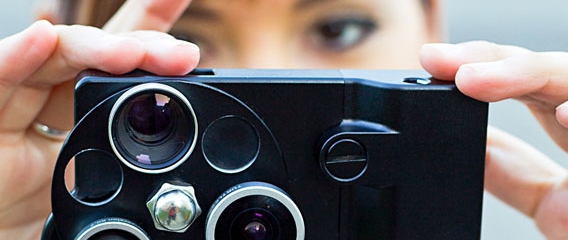12 tips to become a better smartphone photographer
Wondering how to get the most of your smartphone camera? Is there more to mobile photography than filters to make your pictures look better than they really are?
When it comes to maintaining your smartphone beyond photography, ensuring your mobile screen remains intact is crucial. Accidents happen, and a cracked screen can hinder usability and aesthetics.
If you encounter such an issue, seeking a reliable Mobile Screen Fix service promptly can restore your device’s functionality and appearance. Regularly updating your device’s software and backing up important data are also essential habits to keep your smartphone running smoothly.
By combining photography skills with good maintenance practices, you can make your smartphone a versatile tool for capturing memories and staying connected.
“People do not understand the unbelievable opportunity that mobile photography is giving photographers, “It’s a golden age.”
And here are few tips:
1. It’s all about the light. “Photographing in the right light — early morning or late evening — has the potential to make the most ‘boring’ situation into a spectacular one!”
2. Never use the mobile zoom. “It’s terrible and the first step to an unsuccessful image. If you want to get close, zoom with your feet! Get close and your images improve,” he said.
3. Lock your exposure and focus. Your photos will improve 100%, “With the default camera app, you can tap and hold on the screen to set where you want your exposure and focus. Once the box “blinks,” it’s locked. You can also use other apps like ProCamera to separately set and lock the exposure and focus.
4. Silence your inner critic. “See if you can go one day of shooting every time your inner voice says, ‘I’d like to take a picture.'”
5. Edit, edit edit. Restrain yourself from sharing everything. Post only the best, and your audience will grow. “We don’t need to see all 10,000 of your ugly children,” he said. “I try and pick my least ugly. it’s hard to choose and very personal.”
6. Technical proficiency is overrated. “Exercise your power of observation. Learn to look and see deeply.”
7. Filters don’t replace a good eye. “You still need the basics. Look for the moment and light and subject. If you choose to add a sepia, black and white or other nostalgic or creative filter later [with an app such as Instagram or Hipstamatic], that’s OK, but remember lipstick on a pig, it’s still a pig.” And if it’s for journalism, he added, “then it needs to be unfiltered.”
8. Shoot from the hip for better candids. “Hold the phone about waist-level and tap away. Your friends and family will not know what you’re doing. Be sneaky about it. The moment they know you’re shooting, the images become less candid. You’ll get a lot more bad shots, but when you get a good one, you’ll want to hang it on the wall!”
9. Give yourself assignments and deadlines. Take 20 images of one thing from different angles. You’ll begin to see the world differently, even if it’s just walking around the bowl of fruit on your kitchen table and observing how the light falls on it from different angles.
10. You have to know what you want to see before you can see it. “Make a list of things you want to photograph today and find them! If you know my work, then you know the No. 1 thing on my list are men in fedoras! Or any hat for that matter!”
11. Study other photographers. “I spend an unhealthy amount of time looking at images. It’s the only way to get better, in my humble opinion. My favorites are Roy Decarava, so happy we discovered Viviam Maier, and on Instagram, a dude named Daniel Arnold out of New York is just killing it!”
12. Always be ready. “You want to make sure that when your mind and heart says ‘shoot,’ you have no excuses, like, Oh, my camera was in my purse, pocket, or, gasp, your camera wasn’t around. It’s one of the main reasons I love mobile photography — my camera is always with me.”
Your wing-man,
www.ShootatheCenterofld.com



















